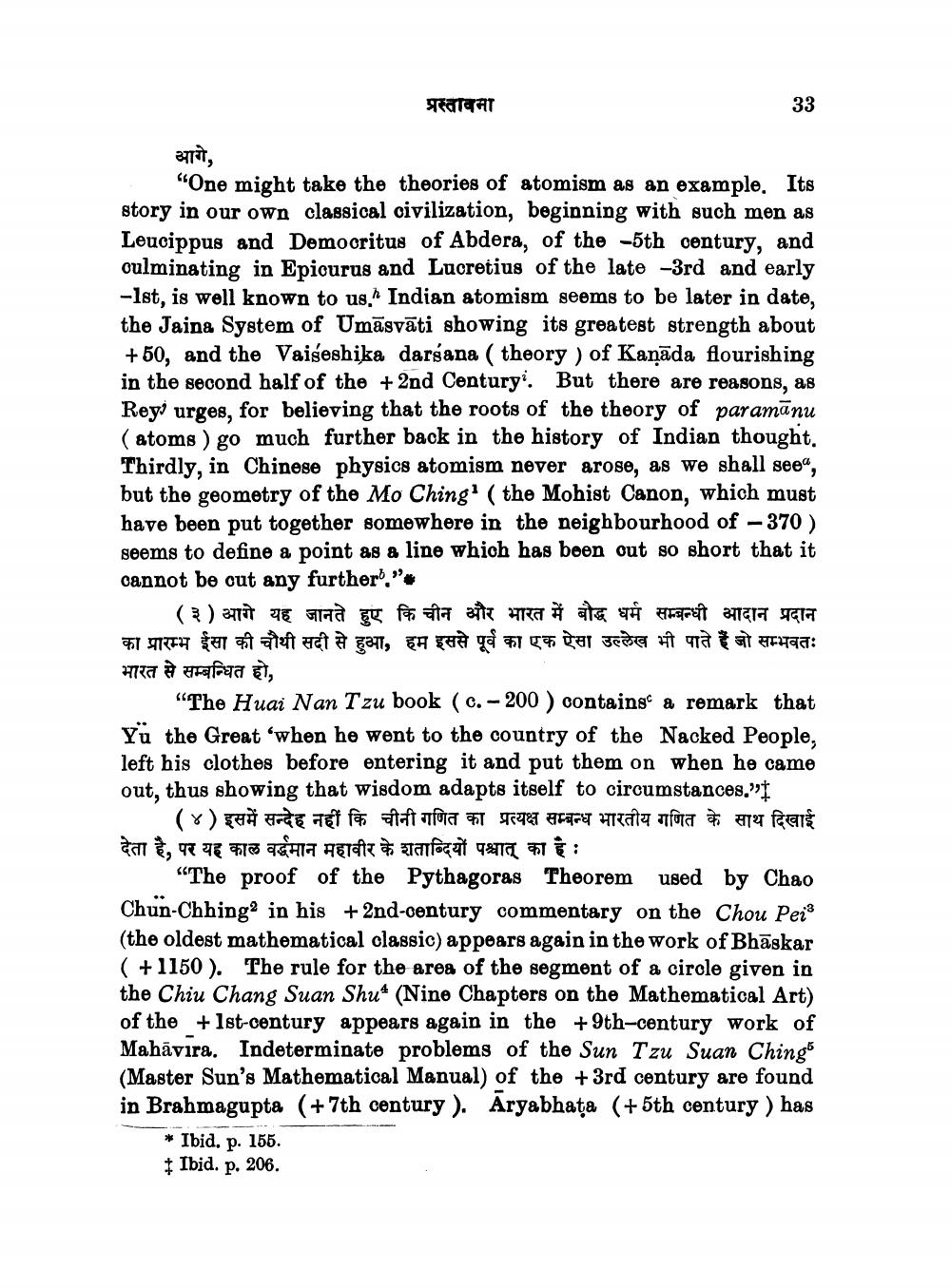________________
प्रस्तावमा
33
37TTT,
"One might take the theories of atomism as an example. Its story in our own classical civilization, beginning with such men as Leucippus and Democritus of Abdera, of the 5th century, and culminating in Epicurus and Lucretius of the late 3rd and early -1st, is well known to us. Indian atomism seems to be later in date, the Jaina System of Umāsvāti showing its greatest strength about +50, and the Vaigeshika dargana ( theory ) of Kanāda flourishing in the second half of the + 2nd Century. But there are reasons, as Reyi urges, for believing that the roots of the theory of paramānu (atoms ) go much further back in the history of Indian thought. Thirdly, in Chinese physics atomism never arose, as we shall seea, but the geometry of the Mo Ching' ( the Mohist Canon, which must have been put together somewhere in the neighbourhood of - 370 ) seems to define a point as a line which has been out so short that it cannot be cut any further."
(३) आगे यह जानते हुए कि चीन और भारत में बौद्ध धर्म सम्बन्धी आदान प्रदान का प्रारम्भ ईसा की चौथी सदी से हुआ, हम इससे पूर्व का एक ऐसा उल्लेख भी पाते हैं जो सम्भवतः भारत से सम्बन्धित हो,
"The Huai Nan T zu book (c.-200 ) contains a remark that Yu the Great 'when he went to the country of the Nacked People, left his clothes before entering it and put them on when he came out, thus showing that wisdom adapts itself to circumstances.”
(४) इसमें सन्देह नहीं कि चीनी गणित का प्रत्यक्ष सम्बन्ध भारतीय गणित के साथ दिखाई देता है, पर यह काल वर्द्धमान महावीर के शताब्दियों पश्चात् का है :
"The proof of the Pythagoras Theorem used by Chao Chun-Chhing in his + 2nd-century commentary on the Chou Pei? (the oldest mathematical classic) appears again in the work of Bhaskar ( + 1150 ). The rule for the area of the segment of a cirole given in the Chiu Chang Suan Shu* (Nine Chapters on the Mathematical Art) of the + 1st-century appears again in the + 9th-century work of Mahävira. Indeterminate problems of the Sun Tzu Suan Chings (Master Sun's Mathematical Manual) of the + 3rd century are found in Brahmagupta (+7th century). Aryabhata (+5th century ) has
* Ibid. p. 155. Ibid. p. 206.




